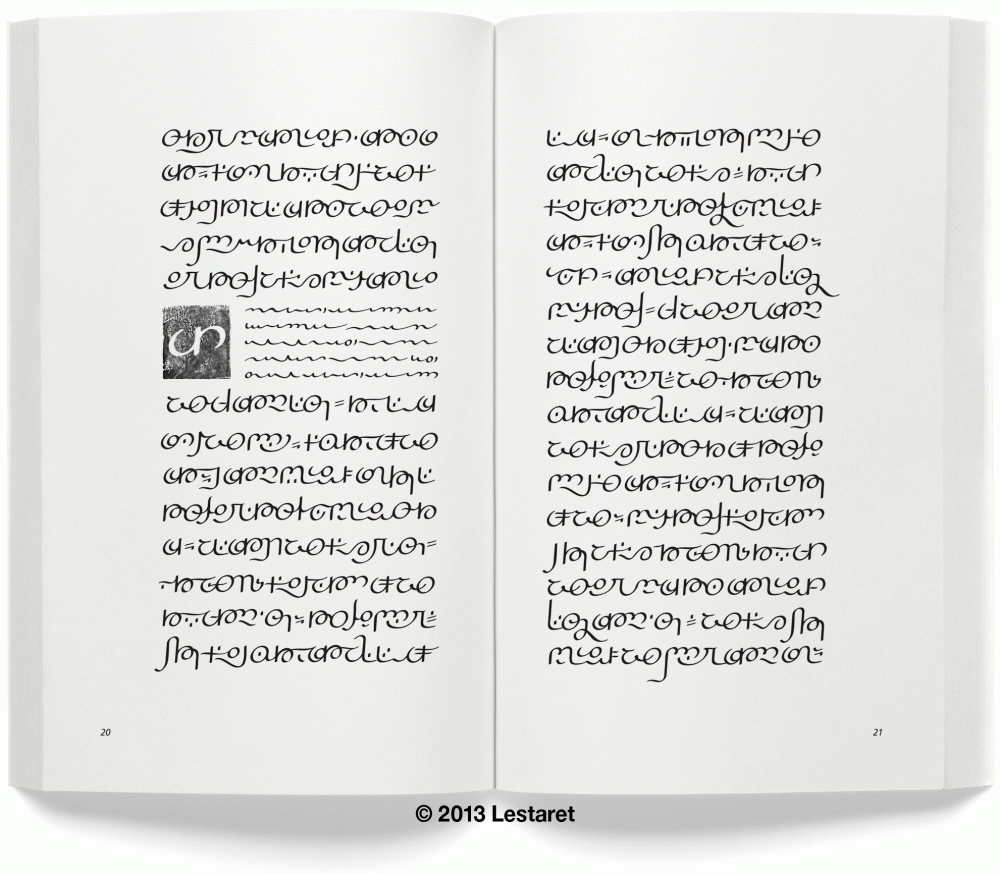


After many months of feverish activity, the third installment of my asemic novel is nearing completion. It has been hard work. Difficult sometimes but not unenjoyable though. This book has emerged, blossomed and bloomed during a very difficult period in my life, which has brought many other creative endeavours to an abrupt halt. For this reason it feels that bit more special to me.
I have posted a few pieces on the early stages of development of the new script for this book and shown far more of the process that I had done previously. This has generated some very positive feedback along the way and has, at times, been a valuable source of motivation during periods of doubt, depression or general creative malaise. Thank you.

The contents are done. Final pagination is underway. The technical process of putting a book together has begun – I have a title and a cover too. This stage can feel very indulgent at times. As a graphic designer I am not afraid to let anyone know that I get a good kick out of the technical aspect of the production stage, but with this one I feel that there is a greater impulse to ‘get things right’ in regard to the juxtaposition of content. In this I am very aware that every decision I make can potentially jeopardise the balance previously established and threaten both the totality of the book and its place as the third piece of a planned four.
I am regularly frustrated with myself when I am indecisive or stubborn in my design decisions, and employ a variety of reflective though processes to analyse the consequences of each step. This approach is sometimes more problematic than helpful, particularly in times when personal confidence is compromised. That said, I am not always afraid to trust my judgments, even when previous analysis suggest that I may well be wrong. Experience? Intuition? Instinct? Yes to all three.
This when the objective/subjective argument kicks in; can I be an effective creator and editor at the same time? Well, yes – to a point – the years of experience in design decision making and teaching have allowed me to develop the ability to stand outside of my own preferences in order to make judgements in a variety of situations. And then there is the ‘no’ part – it is impossible to achieve total detachment from yourself. So how does this work?
When it comes to personally led work, it is easy to indulge oneself completely. Self publishing (which used to be called vanity publishing) is, in itself, an indulgence – I don’t fool myself that it is anything other than this. It is, however, a practical method of producing specialist books ‘on demand’ to very limited audiences though, and quite cheap too, which is not something that can be overlooked. These books, for me, are initiated by my own personal vision of what I wish them to be, but once the content has been completed, I can really begin to think about the work on a whole new level; what would I want to see if I were the purchaser?
This approach allows me to explore the content I have produced in a different way than the process I used to create it and juxtapose imagery out of the synch in which it was developed. This inevitably leads to new ideas, developments within the artwork, and occasionally a very harsh cull. There is a heck of a lot of material that never makes it to the book. These are sometime discarded, but often resurface in other projects at other times. But now I’m rambling!
I guess I just wanted to let you know that the new book is almost ready and I’m really proud of it. Not long now.



































